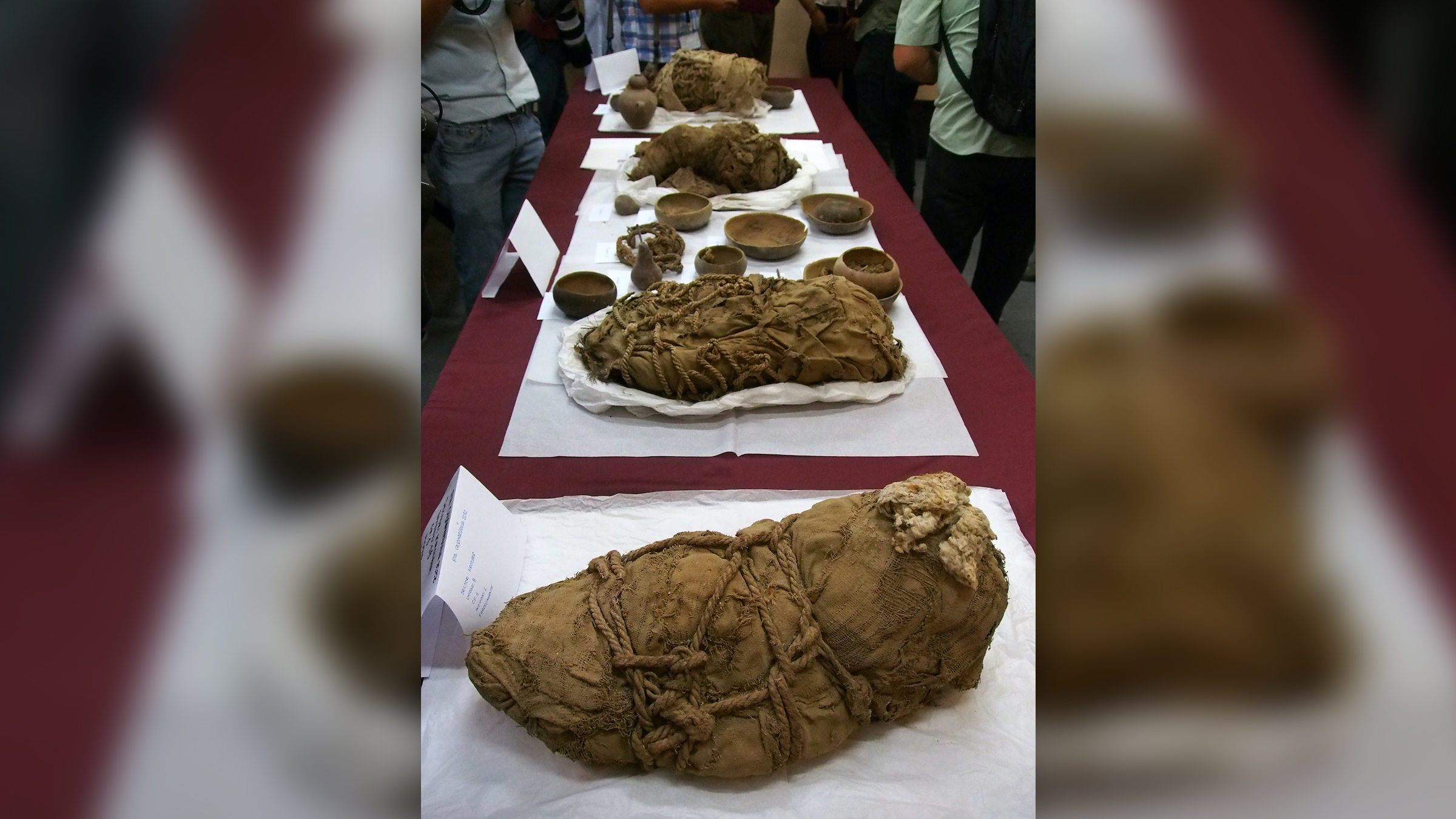Remains of ancient child sacrifice victims found near 1,000-year-old mummy in Peru
After an initial discovery, 20 more mummies were found.

The remains of 20 people who may have been victims of ritual sacrifice have been found near a mummy in Peru.
The mummy, a male, was found in 2021 in an underground tomb at the ancient city of Cajamarquilla, on the outskirts of Lima. The man was lying in a fetal position, and the remarkable preservation of the mummy made headlines around the world. At the time, archaeologists believed the man was between 18 and 22 years old when he died, but new research suggests the man was roughly 35 years old at the time of his mummification, the researchers said in a statement about the discovery. Archaeologists named the mummy "Chabelo."
The newfound remains include those of eight children who were wrapped in funerary bundles, as well as the skeletons of 12 adults. Some of the children have evidence of violence, such as fractures, and it's possible that some of the children were sacrificed as part of a funerary ritual, the researchers said.
Related: The amazing mummies of Peru and Egypt
"We know that Andean societies had a series of funerary practices, rituals, and from their worldview, they had a way of seeing the world that was completely different from ours," Pieter Van Dalen Luna, an archaeology professor at the National University of San Marcos who leads the team that's excavating the site, said in the statement. "The conception of death was very important to them; it was a parallel world, the abode of the dead."
The team plans to perform DNA analysis and radiocarbon dating on the remains to learn more about the people.
The city of Cajamarquilla had four pyramids around 1,000 years ago, when the man lived. At the time, it was an important place for trade between people who lived in the coastal and mountainous areas of Peru. However, only about 1% of the site has been excavated, the archaeologists said in the statement.
Get the world’s most fascinating discoveries delivered straight to your inbox.
Archaeologists have found no traces of a writing system dating to that time in Peru, so scholars have to rely heavily on archaeological remains to understand what life was like. Van Dalen Luna did not respond to a request for comment by the time of publication.
Originally published on Live Science.

Owen Jarus is a regular contributor to Live Science who writes about archaeology and humans' past. He has also written for The Independent (UK), The Canadian Press (CP) and The Associated Press (AP), among others. Owen has a bachelor of arts degree from the University of Toronto and a journalism degree from Ryerson University.



